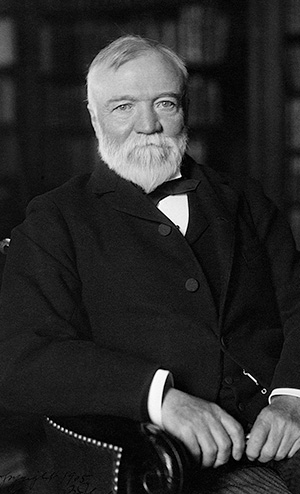
Industrialist Andrew Carnegie (1835–1919) led the expansion of the American steel industry in the late 19th century and in doing so became the wealthiest man in the world. Dedicated to philanthropy, he donated most of his vast fortune to foundations, charities, universities and, most notably, public libraries that he built across the country and throughout the English-speaking world.
Carnegie immigrated with his parents and younger brother, Thomas, from Scotland to what is now Pittsburgh’s North Side at age 12, and he built his fortune in the region. Starting as a bobbin boy in a cotton factory, he worked his way up through various jobs, eventually investing in railroads and steel. He founded Carnegie Steel Company, headquartered in downtown Pittsburgh, which revolutionized steel production in the United States and was sold in 1901 to form U.S. Steel.
Believing that the rich have a moral obligation to distribute their wealth for the public good, Carnegie gave away most of his fortune during his lifetime. His legacy lives on through an array of charitable organizations, institutions like Carnegie Museums of Pittsburgh and Carnegie Mellon University, and thousands of public libraries bearing his name.